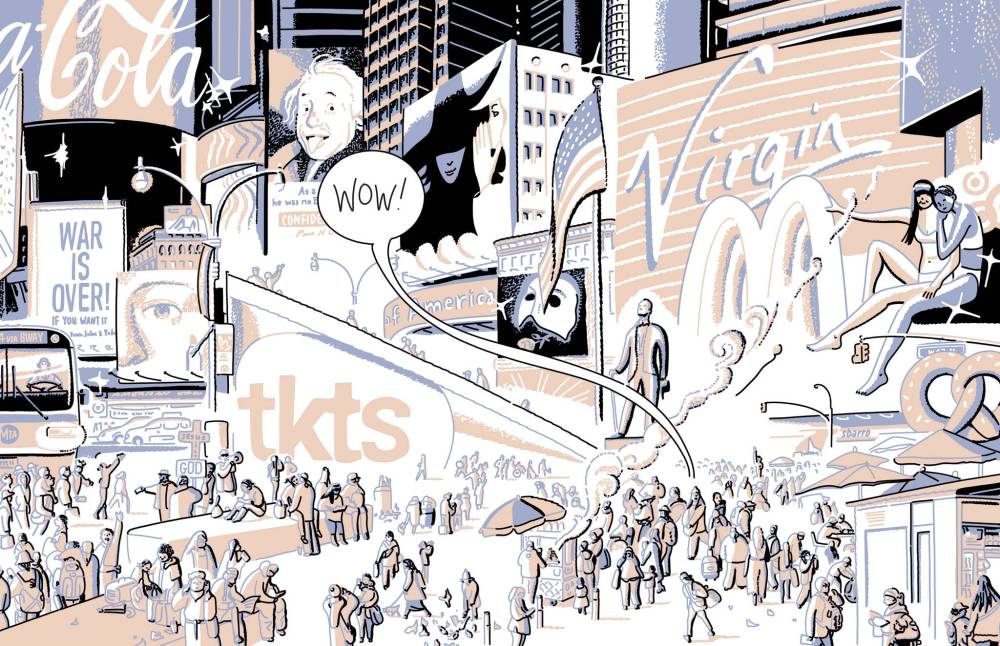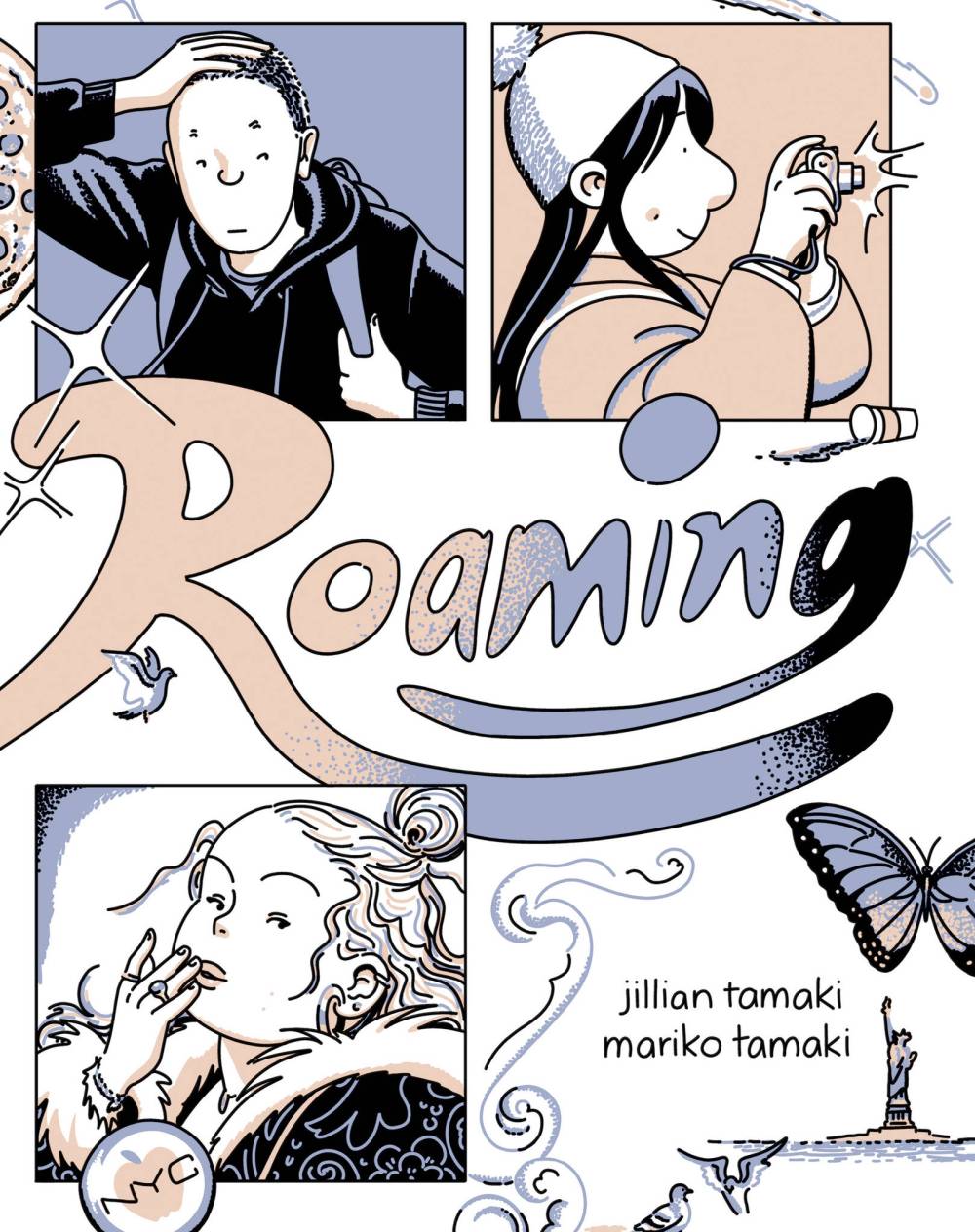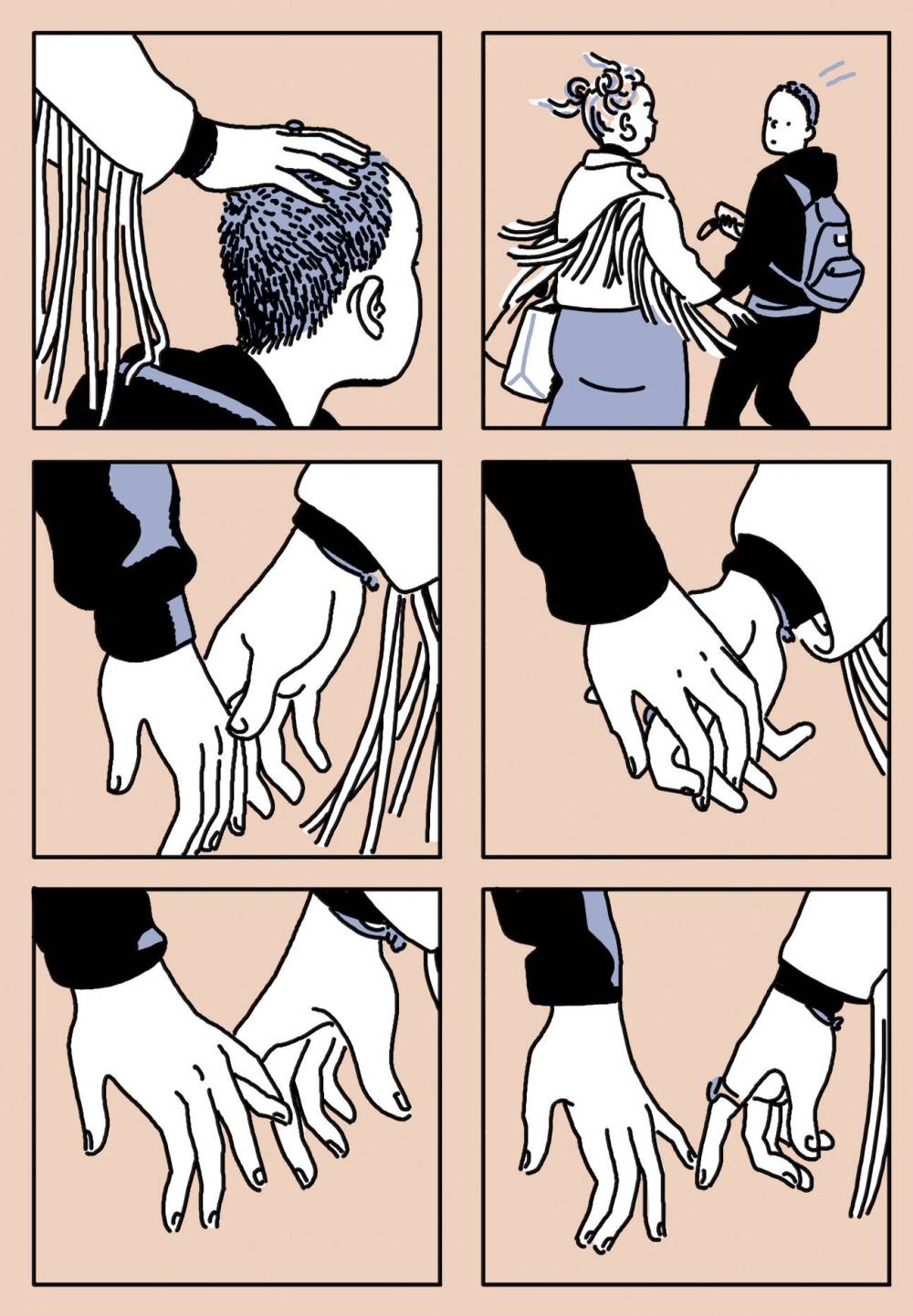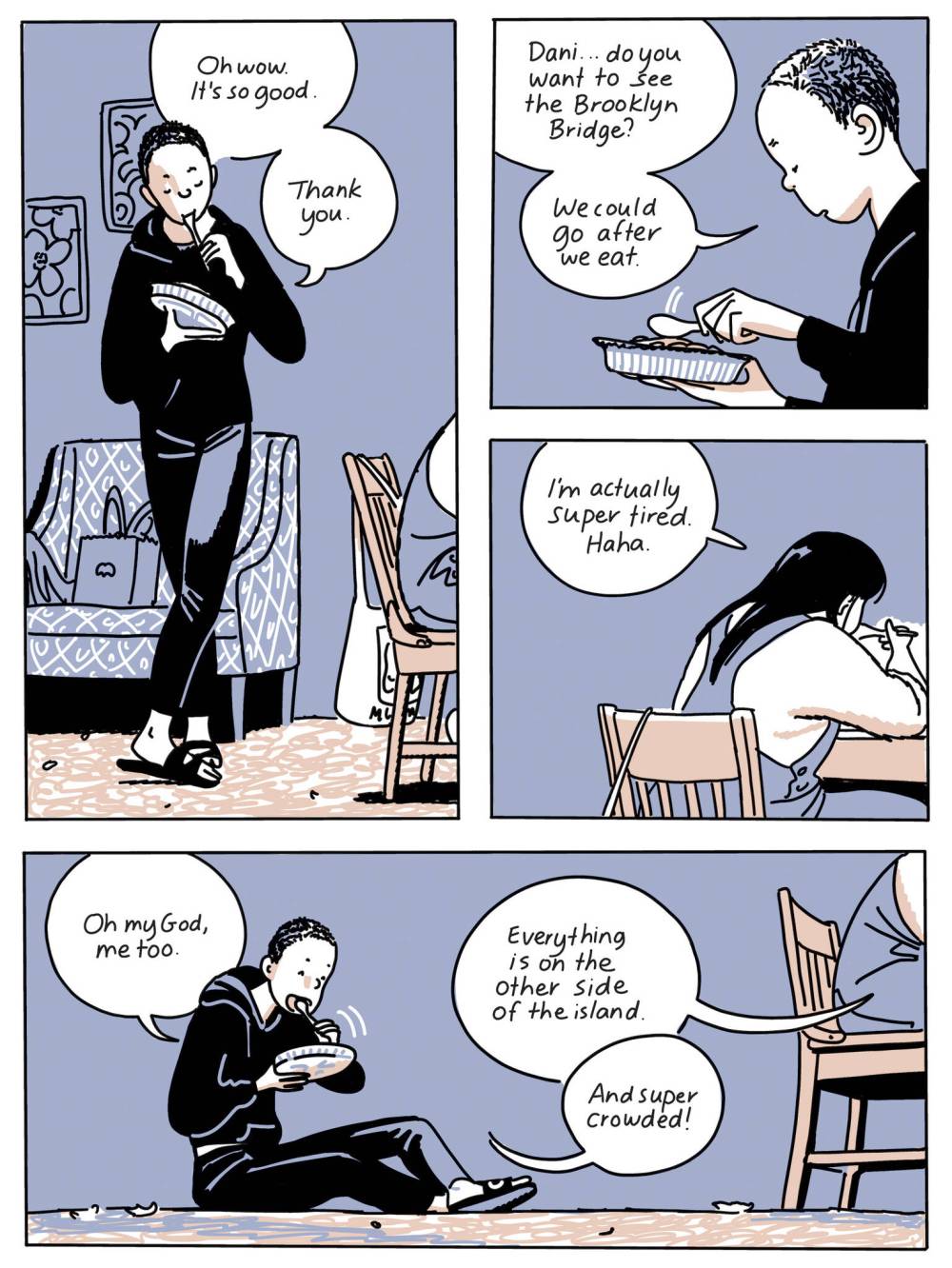New York state of mind
Trio descends on Big Apple in Tamaki cousins’ dazzling exploration of new adulthood
Advertisement
Read this article for free:
or
Already have an account? Log in here »
To continue reading, please subscribe:
Monthly Digital Subscription
$1 per week for 24 weeks*
- Enjoy unlimited reading on winnipegfreepress.com
- Read the E-Edition, our digital replica newspaper
- Access News Break, our award-winning app
- Play interactive puzzles
*Billed as $4.00 plus GST every four weeks. After 24 weeks, price increases to the regular rate of $19.00 plus GST every four weeks. Offer available to new and qualified returning subscribers only. Cancel any time.
Monthly Digital Subscription
$4.75/week*
- Enjoy unlimited reading on winnipegfreepress.com
- Read the E-Edition, our digital replica newspaper
- Access News Break, our award-winning app
- Play interactive puzzles
*Billed as $19 plus GST every four weeks. Cancel any time.
To continue reading, please subscribe:
Add Free Press access to your Brandon Sun subscription for only an additional
$1 for the first 4 weeks*
*Your next subscription payment will increase by $1.00 and you will be charged $16.99 plus GST for four weeks. After four weeks, your payment will increase to $23.99 plus GST every four weeks.
Read unlimited articles for free today:
or
Already have an account? Log in here »
Hey there, time traveller!
This article was published 07/10/2023 (731 days ago), so information in it may no longer be current.
Roaming is the third graphic novel by Canadian powerhouse duo Jillian and Mariko Tamaki. The Tamaki cousins’ previous, award-winning work (2005’s Skim and 2014’s This One Summer) has been steeped in a recognizable sense of place, the exploration of personal boundaries and a quest for connection.
Book Review
Roaming
- By Mariko Tamaki and Jillian Tamaki
- Drawn & Quarterly, 444 pages
Here, they have crafted these elements into the graphic novel equivalent of a hang-out film — a genre usually light on plot structure and heavy on character study, using interpersonal relationships and dynamics to engage the audience.
In Roaming, spring break 2009 provides the ideal setting for childhood friends Dani and Zoe to meet up in New York City as newly minted college students.
But the easy closeness of their long-term friendship is cut short by Dani’s tag-along dormmate Fiona. Exciting, difficult and boundary-pushing as the city itself, Fiona becomes the catalyst for an inviting story full of iconic landscapes and personal discoveries.
Billed as a “New Adult” graphic novel, Roaming ventures into a place where its characters still have one foot firmly planted in adolescence. College often means new adults can reinvent themselves, and all three characters here are at different stages of figuring out what that looks like.
In the meantime, their detailed wardrobe design provides great visual cues to the reader about their current self-expression.
Dani is surprised to see Zoe arrive with a fresh buzz cut and an arsenal of non-descript black hoodies that seem to double as both security blankets and invisibility cloaks. Dani usually prioritizes a backpack containing her trusty map, but embraces fashion as a newly purchased collared dress and bow blouse reveal her growing confidence.
The Tamaki cousins’ engagement with body diversity has always been a standout feature of their work, and in Fiona they give us a desirable, glamorous fat character confidently existing in an era where glamorous, famous women were often shamed for not being thin.
Anne-Marie Coultier photo Jillian Tamaki
Interestingly, Fiona is also visually coded as the type of manic pixie dream girl stock character present in many coming-of-age films from the early aughts, with her seemingly endless supply of clothes and accessories, and her signature faux-fur coat. She’s also sassy, eccentric and mysterious (often mentioning a wealthy Brooklynite musician brother who might be fictitious).
But instead of becoming entangled with a male protagonist, Fiona fends off unwanted advances from men in public, teaching the need for hypervigilance to her less savvy companions. And when sparks fly between herself and hesitant Zoe (beautifully rendered through charming banter and unspoken gestures), the three travelers’ dynamic is completely upended.
The narrative’s impending emotional turmoil is also visually present in Jillian Tamaki’s immersive pink and lavender spreads, especially in touristy spots such as the Museum of Modern Art (MOMA) or the American Museum of National History.
The artist captures both the sense of scale in a big city and the sense of wonder and possibility that arises while taking it all in. Readers can imagine the too-loud airport, the hustle and bustle of crowded New York sidewalks (which Dani finds offputting) and the whoosh of the subway, as the travellers are whisked around the city.
Audiences are also privy to whirlwind discussions in three distinct voices reflective of both cousins’ uncanny ability to capture acerbic adolescent dialogue. Between bouts of sightseeing, pizza-eating and, in Zoe and Fiona’s case, flirting, Jillian Tamaki’s knack for expressive character vignettes touch on queerness, race (all three are Asian-American — another great feature of this “girls trip” narrative) and class (Zoe is stressed about racking up roaming charges on her phone, which Fiona finds gauche).
Though Fiona’s self-assured, sophisticated nature is the envy of her companions, her own immaturity and vulnerabilities are eventually revealed, and the resulting emotions for the three prove inevitable as loyalties shift once more. But the fleeting excitement of new spaces and places still leave a lasting impression in this dazzling, cinematic exploration of roaming into adulthood.
Nyala Ali writes about race and gender in contemporary narratives.






